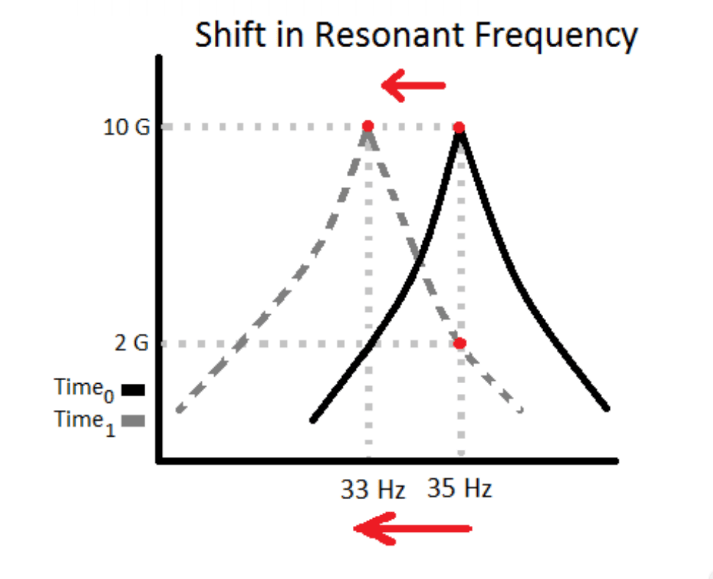Sine Resonance Track & Dwell (SRTD)
March 29, 2018
Getting Started
Sine Vibration Testing
Sine Sweep Parameters
Resonance
Sine Resonance Track & Dwell
Running a Sine Test
Back to: Sine Testing
An engineer may run a sine dwell test on one or more resonances following a sine sweep. During a sine dwell test, the controller runs a single sine tone at the resonant frequency/frequencies rather than sweeping through the frequency range.
A product experiences the most fatigue when exposed to its resonant frequencies. Almost every industry that uses vibration testing uses a sine dwell test in the design and validation of a product. In the vibration testing industry, a sine dwell test may be referred to as sine resonance track & dwell (SRTD).
Shift in Resonant Frequency
A resonance might shift while the controller is running a sine dwell test on the product’s resonant frequency. For example, Figure 5.1 displays a sine sweep with a resonance at 35 hertz (Hz).
If we ran a sine dwell test at 35Hz for an extended period, the resonance might drift down to 33Hz due to heat, fatigue, etc. If we continued to dwell at 35Hz, we would no longer be testing the product at its resonance nor applying the accelerations that would be applied at its resonant frequency. A continuous dwell at 35Hz resulted in an acceleration of 2G rather than the 10G value at its resonance.
In Figure 5.2, the drift in resonant frequency became more severe as the device under test (an aluminum beam) approached failure.

Figure 5.2. Frequency vs. time graph for an SRTD test on a fatigued aluminum beam. Notice the drift in resonant frequency, which became more severe as the beam approached failure.
Thus, a fixed-frequency dwell (a sine dwell that does not adjust frequency) has shortcomings when it comes to dwelling at a product’s resonance. However, there are ways to track a drifting resonant frequency to stay on the resonance.
Phase-Tracking SRTD
One way to stay on resonance is to track the phase difference between the control and response. When a product begins to fatigue, the frequency values of its resonances will decrease but its phase value for the resonance will not.
Phase-tracking SRTD allows the test’s frequency value to adjust with the product’s changing resonant frequency. For more information on this method, see the technical paper Experimental Comparison of SRTD Tracking Methods.
Main Takeaways
- Nature of shifts in resonant frequencies
- Primary methods for tracking resonance during a sine test
When you are ready to run an SRTD test in the VibrationVIEW software, follow this video (7:33):

